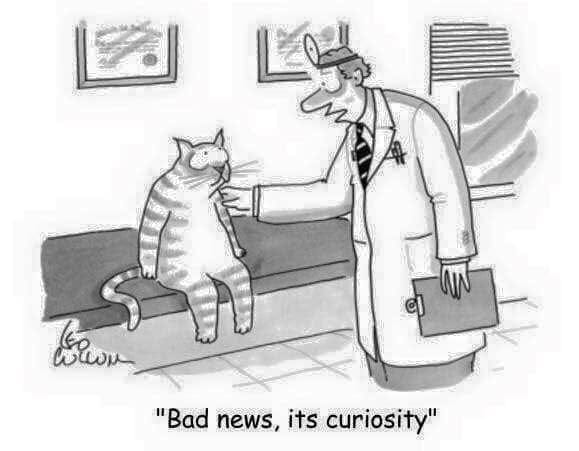WHAT MAKES A GOOD E-Course TEACHER? 8 Tactics for Excellence
Most of us, somewhere in our lifetime, has been the recipient of great teaching and have sat under the tutelage of a great instructor.
When you are creating your course, your quality of teaching can make or break the success of that course. But fortunately, being a great teacher is a learned skill. And like all skills, it is developed with practice.

Cropped shot of a group of unrecognisable people linking fingers out in nature
At some point in your career, you will be required to pass on information, create information, or digest information. Knowing how to find a good instructor when you need one and knowing how to be a good instructor when you are one are now critical skills.
What do you look for and what do you strive for in “Instructorhood?” (Webster and I have an agreement about the English language. I can make up new words if I like how they sound and “Instructorhood” sounds like it should be a word, doesn’t it?
1. A Good Teacher is Interactive
Well guided and thought-through interaction is often the catalyst for “ownership” of information. Have you ever put salt in a carbonated drink? (No? How have you been spending your days?) Well, let me tell you what happens–the Salt Throwing process maximizes the fizz, Baby!
Lively, participatory, hands-on interaction does the same thing. Exercises, drills, role-plays, case studies, and discussions are all practical catalysts for interactive learning. Great instructors are Salt Throwers!
 2. A Good Teacher is Inspiring
2. A Good Teacher is Inspiring
Great instructors spark their Learners, not spike them. Good instructors don’t tell you what you can’t do; they inspire you to do what you can do. They talk about the possibilities, not just the problems. However, if learning is not practical, it’s not of much use.
Imparting knowledge is only part of the process; inspiring people to want to use it is the other part. Good instructors help the Learner believe that he/she is capable of the challenge of Learning; they create a Learning environment that is safe AND a stretch.
3. A Good Teacher is Illustrative
 The tetherball of knowledge can only extend out to the point where it is still connected to something we already know. We must have points of contact (already-known information), a strong tether string (mental link, bridge, association), and then finally, the ball (new information).
The tetherball of knowledge can only extend out to the point where it is still connected to something we already know. We must have points of contact (already-known information), a strong tether string (mental link, bridge, association), and then finally, the ball (new information).
Therefore, good instructors always teach from the “known” to the “unknown.”
Familiar examples, analogies, metaphors, stories, and explanations must be used to explain the unfamiliar and the unknown.
New knowledge must hang from something—anchor it to what the Learner already knows. It makes learning easier and creates a sense of familiarity and safety for the new information.
4. A Good Teacher is Intuitive (& Instinctive)

Good instructors develop a sixth sense of what the group/Learner needs. Some of this instinct is a gift, some experience, and some guts (to leave the text and go with the need of the Learners).
Great instructors, therefore, stay flexible and adaptable, always willing to adjust if they can tell the Learners are not getting it, getting restless, or getting lazy.
5. A Good Teacher is Imperfect
 And finally, and perhaps, most importantly, great instructors realize the limits of their own knowledge. Having a head full of knowledge that you can sort through and rearrange at will through the great hallowed halls of your cranium can make one think there is more up there than there really is.
And finally, and perhaps, most importantly, great instructors realize the limits of their own knowledge. Having a head full of knowledge that you can sort through and rearrange at will through the great hallowed halls of your cranium can make one think there is more up there than there really is.
With knowledge increasing at exponential rates, there will always be more that you DON’T know than what you DO know. And recognition of that is part of what keeps you good.
Mikhail Baryshnikov, who is arguably one of the greatest ballet dancers of all time said, at 52, when being honored at the Kennedy Center for his professional achievements:
“The more I have learned, the more I have realized what I don’t know. My knowledge of movement….I have hardly scratched the surface.”
Conversely, we have all been in learning settings where we felt the instructor was speaking just to hear the reverberations and echos of their own words in their own hallowed (or is it hollowed?) craniums.
Will Rogers said, “Everyone is ignorant, just on different subjects.” Great instructors know they have just as much ignorance as they have intelligence. Keep learning!
6. A Good Teacher is Inquisitive
 When we were babies, all of us were born naturally curious. We were little sponges running around in booties. Our taste for books often meant teething on the right-hand corner of a good paperback.
When we were babies, all of us were born naturally curious. We were little sponges running around in booties. Our taste for books often meant teething on the right-hand corner of a good paperback.
But if you were lucky, as you grew older, you progressed on to devouring the inside of that book, page by page.
Or maybe your book learnin’ never progressed much past teething on the corner of the books, but your natural curiosity had other outlets—you explored the natural world around you, you asked lots of questions from anyone you could corner, and you lived in the “constant observation” mode.
What makes great trainers/teachers/speakers is that they have been able to maintain that natural insatiable curiosity in their own life.
Great instructors truly love their subject matter and love learning in general. This roaring gusher is what carries them forward in their own “want to know” and “gotta learn/study/investigate.”
Before instructors can create Contagious Curiosity in their students, they must have it themselves.
Part of being good instructors is not just satiating the appetites of their students, but whetting their appetites; always leaving the Learner wanting more.
Leave the fires blazing. That way the Learner will continue lifelong learning solo long after you, the instructor, have whetted their interest.
7. A Good Teacher Individualizes

You see it. You hear it. You feel it. That’s the shortened version of how people learn best. In other words, people are either visual, auditory, or kinesthetic.
The processing of information is very individualized and though we all learn all ways, each of us has our favorite way to “process.”
Because I’m visual, I love to read (i.e. see the words). My Dad is auditory and listens to audiobooks all the time. Good instructors instruct on all levels, so each “type” maximizes their learning.
8. A Good Teacher is Insistent
Insistence on standards ultimately drives home the quality of Instructorhood. In spite of all the fun, frolic, and good times, ultimately the Learner must walk away with usable information and practical skills. Repetition, time for questions and answers, and real-life applications help make this happen.
Insist on an end result—a benchmarked standard of excellence.
A common criticism I have oft heard of trainers/teachers/instructors/speakers/coaches is that “those who can do it, do it; those who can’t do it, teach it”. Hmmmm, we could reverse the criticism and say, “Those who can’t teach it, do it.”

Actually, both statements are missing the whole point. They are two entirely different skills. The whole point is this: the difference in teacher/learner (player/coach) is a very distinct one—they are two very separate “callings.”
The best players are rarely the best coaches and the best coaches are rarely the best players. Playing and coaching are two separate gifts. Playing is something I do. Coaching is something I help others “to do.”
Throughout your life, you will be asked to fill one or both roles.
When the time comes, therefore, to instruct/coach, be someone who is Interactive, Inspiring, Illustrative, Intuitive, Inquisitive, Individualized, Innovative, Inergetic, Insistent and of course, Imperfect! Instruct on!

